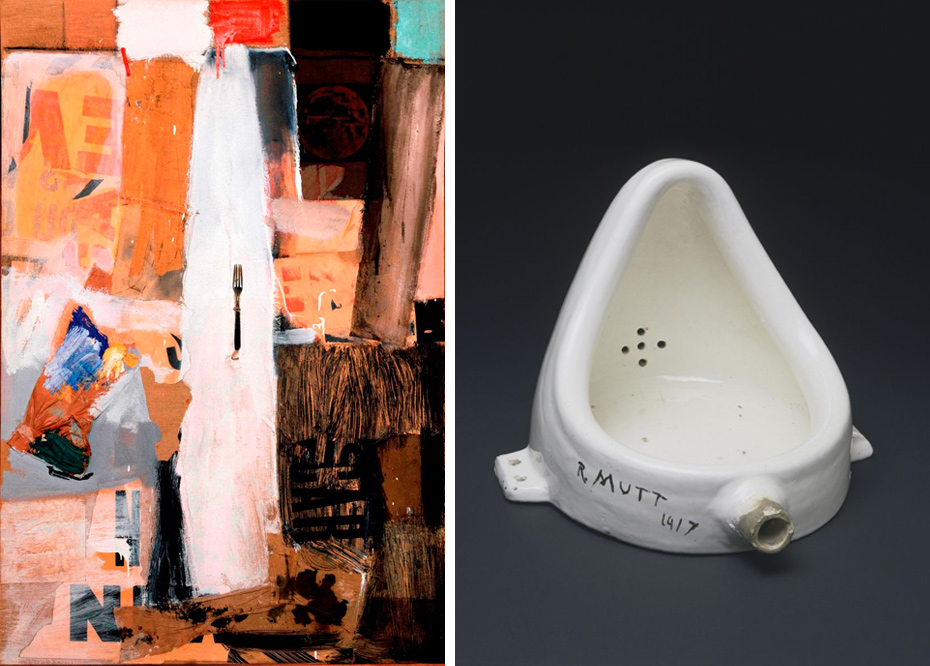William Kherbek looks at Duchamp’s influence on 20th century Greats at the Barbican, but finds a greater space for exploration at the Gagosian

I know a lot of people who love John Cage. For me, Cage is a bit like listening to someone describe their irrational fears to you; perhaps you can see what scares them, but it’s never going to have the same meaning. I won’t pretend the world didn’t need John Cage, but for me, he’s all about dosage. It’s a strange alchemy too, because it would seem to make sense that the more deeply and diversely you engage an artist’s work, the more subtlety you find, but, in a strange aesthetic koan that the Zen-friendly maestro himself might appreciate, the more I hear of Cage, the more I think, “Okay, but so what?”
Walking through the expansive The Bride and The Bachelors show at the Barbican, I have to say, I think someone made an error converting Fahrenheit to Celsius and screwed up the Cage dosage. It’s a shame, too, because a judicious splash of Cage might have added a welcome disruptiveness to the often overly solemn character of exhibitions of the Modern Greats. As it is, the seemingly endless Cage playlist ends up suctioning up a lot of the mental energy the show generates.
If there was one thing Cage understood, it was the relationship between sound and silence, it’s a lesson that The Bride and the Bachelors seems to have curiously ignored.
That the Cage Cavalcade is being “performed” by player pianos doesn’t help matters, it makes the proceedings eerily like a fever-dream version of a video by the 80s ephemerides Taco. It’s a shame The Bride and the Bachelors doesn’t quite measure up to its potential, but on the subject of measuring, you can at least see Duchamp’s Three Standard Stoppages and The Large Glass which is a pleasure – why, beyond a bloody-minded literalism, Cage’s own rope-executed doodles need to be in the same room with …Stoppages is another question. There are some excellent Jasper Johns works as well, which are a timely reminder of what made people love Johns in the first place. Aside from scheduled dance events on Thursdays and weekends, there’s far too little attention to Merce Cunningham in the rest of the show.
“There’s an organic quasi-religious quality to the works in Jammers evoking landscapes and religious iconography”
I’d expected going in that The Bride… would provide a great context for the work of Robert Rauschenberg. Well, blow me down if it wasn’t the Gagosian Gallery that managed to drastically upstage the Barbican in this instance.
There are good Rauschenbergs in The Bride…, not least the works from his Trophy series created for other artists, including Johns, but the Gagosian works, perhaps because of their less busy context, somehow get at the spirit and complexity of Rauschenberg’s work much more powerfully. The show, titled Jammers, consists mainly of fabric works, and a few combines involving cans and wooden poles. There’s an organic, almost quasi-religious quality to the works in Jammers, evoking landscapes and even, to an extent, religious iconography that truly opens up the potential inherent in the nature of Rauschenberg’s famous “combines” of various earthly detritus. They’re not quite ready-mades in the Duchampian sense, they’re more already-remades in the sense that the underlying materials are constantly writing and unwriting their own meanings, seen one way, they’re sculptural, seen another, they’re painterly, seen another they’re almost performative.
Rauschenberg’s art at its best is messy and living, and therefore needs a bit more room to breathe than is necessary for other artist’s work. You can almost hear it gasping at the Barbican. Come to think of it, John Cage was fond of considering breath in relation to art as well. If you go to The Bride… you’ll see examples, just don’t hyperventilate.
The Bride and The Bachelors: Duchamp with Cage, Cunningham, Rauschenberg and Johns runs until 9 June 2013 at the Barbican Arts Centre, Silk St London EC2Y 8DS and Robert Rauschenberg: Jammers runs until March 28 2013 at Gagosian Gallery 6-24 Britannia Street, London WC1X 9JD




